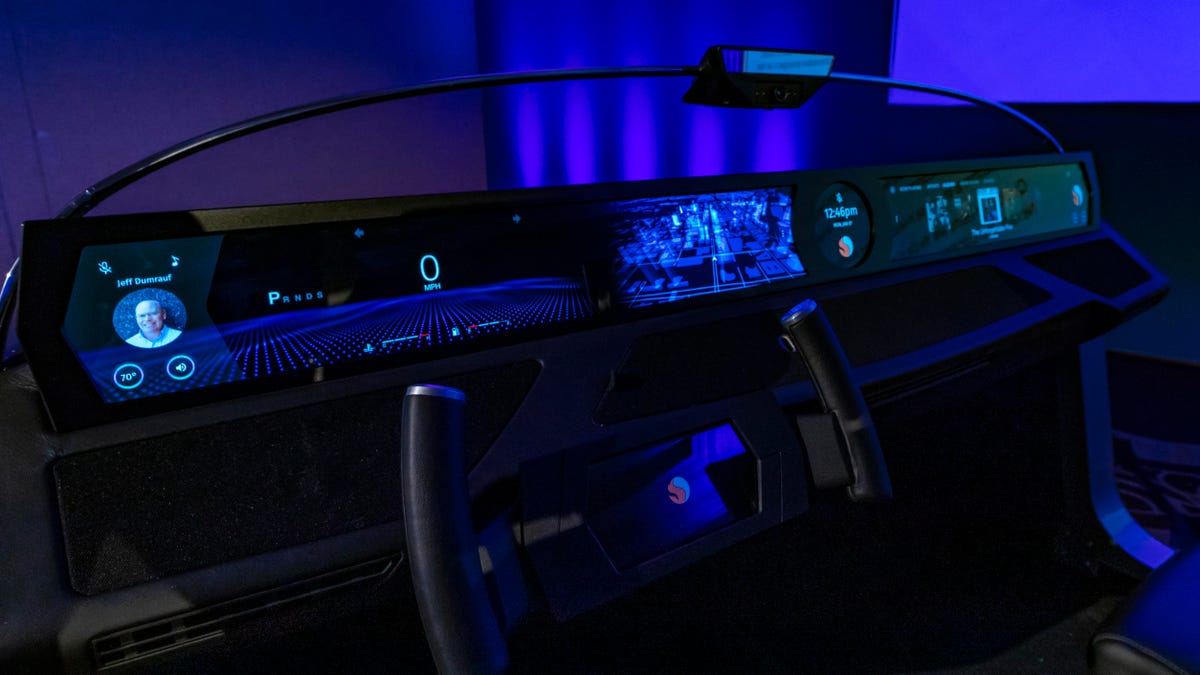Qualcomm seeks to save lives with new C-V2X driver warning system
The technology holds a lot of promise, but will be difficult to turn into a reality.

There's still an enormous amount of work to do to make roads safer. In 2017, about 40,000 Americans were killed in motor vehicle fatalities. An additional 4.5 million people were injured seriously enough to require medical attention, according to the nonprofit National Safety Council.
Qualcomm, a company that's best known for making computer chips for smartphones, used its stage at the CES trade show in Las Vegas to highlight some of these stark numbers and offered a potential way to lower them.
The chipmaker discussed its efforts to deploy C-V2X technology in cars and roadside infrastructure as a new way to allow drivers to -- in effect -- see around blind corners, stop ahead of emergencies a mile down the road and brake before hitting a distracted pedestrian. The technology uses existing cellular networks to allow cars to essentially communicate with each other and other objects along the road. That information is then fed as warnings to drivers to help them avoid collisions and other dangers. For C-V2X to work, it needs to blanket road infrastructure and be used in most, if not all, vehicles on the road.
"I think it has a tremendous amount of potential, but it is something that's difficult to deploy," Nakul Duggal, a Qualcomm senior vice president of product management, said just after Qualcomm's CES presentation Monday.
Qualcomm's presentation offered a deeper potential value for technology at a trade show that often focuses on baubles and nice-to-haves, like connected toilets and a new kind of toothbrush. C-V2X offers a way for the automotive and tech industries to help tackle far larger and thornier societal problems. In addition to helping save lives, C-V2X has the potential of cutting down on road congestion, too.
But, in discussing such efforts, Qualcomm and others will need to avoid overpromising the benefits of such systems, since they are likely a long way from reaching the streets and may never get there. Plus, while being rolled out and refined, these complex technologies are likely to face many hiccups, errors and even data breaches along the way.
C-V2X isn't an active system, so it won't brake your car for you, Duggal said, but he said he believes the warnings provided to drivers will be critical in helping save lives. However, making C-V2X a reality will likely require years of work to bring the system to cars and infrastructure. Some cars have other kinds of active systems, like front-facing cameras that can trigger a car's brakes.
Also, C-V2X offers a different way to create this new communication system that may move away from a similar technology called dedicated short-range communications, or DSRC. DSRC has been under development for decades.
As part of Qualcomm's presentation at Mandalay Bay on Monday, Ford said it plans to deploy C-V2X communications in all its new cars starting in 2022, offering a big boost for C-V2X's future as a new industry standard ahead of DSRC. Qualcomm said it will also trial C-V2X technology with the city of Las Vegas and the Regional Transportation Commission of Southern Nevada, joining a handful of other trials it's worked on around the world.
Qualcomm also announced Monday:
- Its chips will help power more than 30 commercial 5G devices -- mostly smartphones -- set to launch in 2019. It previously said it was working with nearly two dozen companies, including Google and Samsung, on 5G devices.
- As part of its new automotive cockpit platform, Qualcomm showed off an integration with Amazon's Alexa for cars. The Alexa demo, though, didn't go so smoothly. As Duggal described some of the cockpit system's capabilities, Alexa interrupted him, saying, "No, that's not true," eliciting claps and a big laugh from the audience. When working correctly, Alexa will be able to help find local restaurants, set up navigation and cue up music. Qualcomm said it's agnostic when it comes to working with digital assistants, saying it's also working with Google on its rival Google Assistant to provide multiple options for automakers.
CES 2019: See all of CNET's coverage of the year's biggest tech show.
CES schedule: It's six days of jam-packed events. Here's what to expect.

